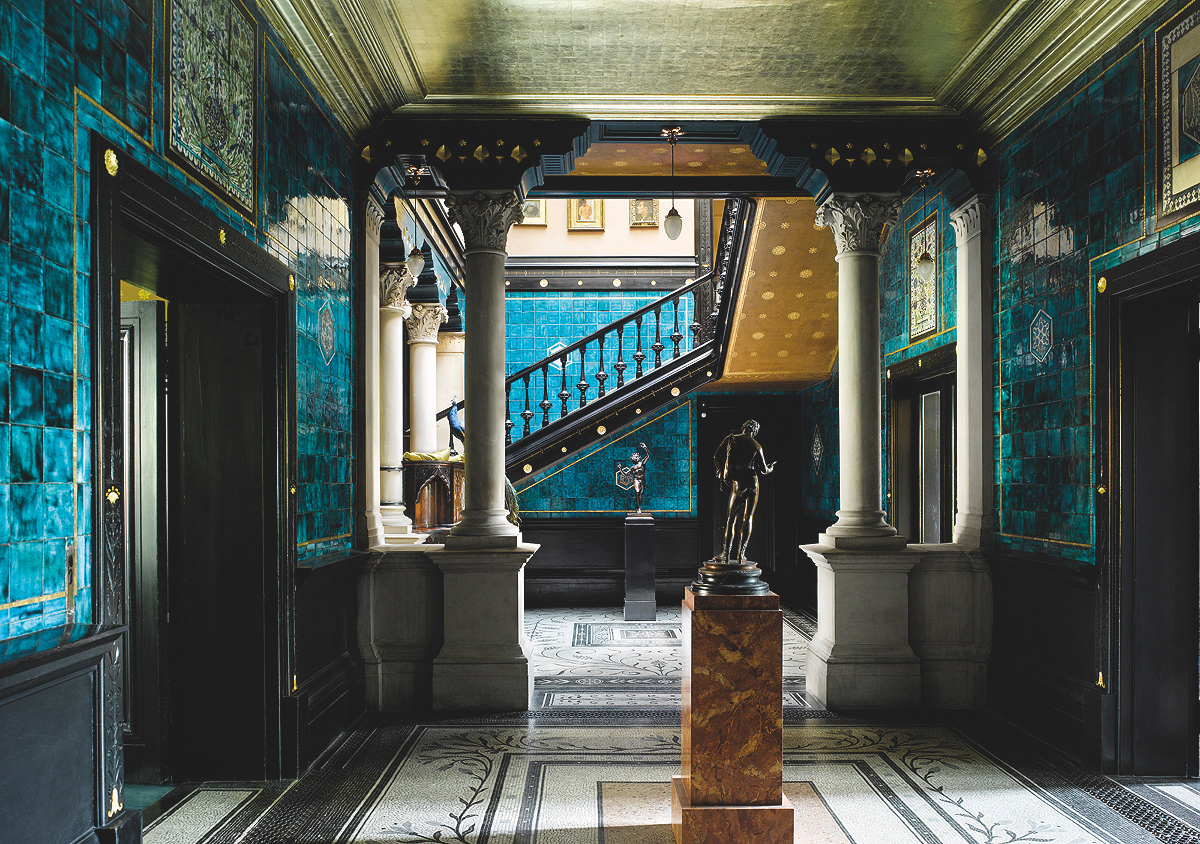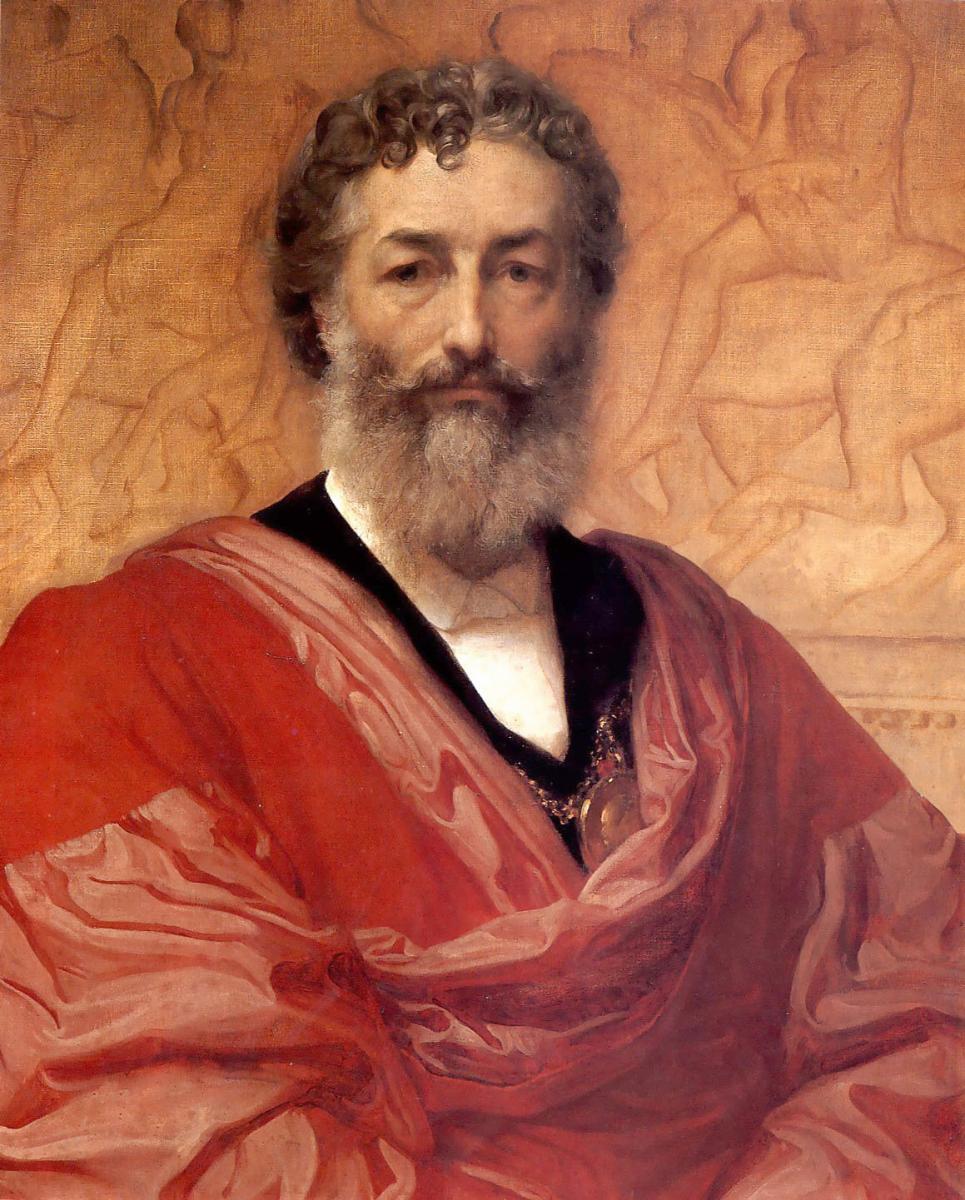This wonderful Cornish workshop and museum is dedicated to the legacy of studio pottery trailblazer Bernard Leach
INSTANT EXPERT: LORD LEIGHTON’S PALACE
INSTANT EXPERT: LORD LEIGHTON’S PALACE
23 Apr 2022
It took artist Frederic Leighton over 30 years to realise his dazzling London studio-house, which reopens later this year, post major restoration. Its curator, Arts Society Lecturer Daniel Robbins, tells its story

LHM Narcissus Hall The Royal Borough of Kensington and Chelsea. Image courtesy of Will Pryce
Who was Frederic, Lord Leighton?
Born into a wealthy family in 1830, in Scarborough, Yorkshire, Frederic Leighton became the most eminent artist of the Victorian age. Famed for the ambition and technical accomplishment of his painting, he served as the president of the Royal Academy for over 18 years. He remains the only British artist to have been ennobled, becoming Baron Leighton of Stretton shortly before his death in January 1896. Leighton was interred in the crypt of St Paul’s Cathedral next to its architect, Sir Christopher Wren.
Desire to build
From early in his career, Leighton wanted to build a studio-house. The sale of his painting Dante in Exile (now in the Andrew Lloyd Webber collection) for over £1,000 in 1864 (the equivalent of almost £130,000 now), coupled with his election as an associate member of the Royal Academy, gave him confidence to proceed. A site was acquired on Holland Park Road in Kensington and Leighton engaged his ‘old friend’ George Aitchison (1825–1910) as architect. Aitchison remained the sole architect through many phases of embellishment over three decades, as together they created one of the most extraordinary homes of the 19th century.
Lustrous tiles and silks
The first version of the house was relatively modest, but it was extended at the end of the 1870s with the construction of the spectacular Arab Hall. Built to display the exceptional collection of Islamic tiles Leighton had acquired when travelling in Turkey, Egypt and Syria, the interior confirmed that aesthetic rather than conventional domestic considerations were paramount to him.
Further additions were made up until shortly before his death, when the Silk Room was completed, serving as a gallery for works of art presented to Leighton by contemporaries. The cost of these undertakings was considerable, but so was Leighton’s income. The house in its first version cost £4,500 (some £585,000 today). In 1889, Leighton sold his Captive Andromache to Manchester City Art Gallery for £6,000 (almost £780,000).

Frederic Lord Leighton self-portrait, 1880
A palace with one bedroom
Leighton’s ‘private palace of art’ established the idea of how a great artist should live in the mind of the public. Some say its lavish layouts led to the beginning of interior design as a recognised medium. The grand studio on the first floor provided a workspace where virtually all the paintings of his mature career were produced. The house was also a place to be visited and seen. His collections of fine and decorative art were displayed throughout; each room presented an aspect of his interests.
Queen Victoria came on a private visit in 1869. All Royal Academicians were received annually, and Leighton was ‘at home’ on a Sunday afternoon. He gave guided tours to groups and journalists, resulting in articles in the national and international press. At the same time, Leighton was an intensely private man with an almost obsessive attitude to the management of his time. One of the great oddities of the house is that it has no guest accommodation. Leighton occupied a modest single bedroom. While he was hospitable, accommodating overnight guests was a step too far.
Hidden gem to national treasure
The recent £8m restoration and renovation project has fully opened up the museum to the public and created new spaces that explore Leighton’s life, the creation of his house and other studio-houses of the ‘Holland Park Circle’ of artists. Leighton’s winter studio and entrance hall are also now restored, completing the recovery of Leighton’s ‘house beautiful’.
SEE
Leighton House reopens later this year. For more information, see rbkc.gov.uk/museums
About the Author
Daniel Robbins
Daniel Robbins is Senior Curator, Museums with the Royal Borough of Kensington and Chelsea and is responsible for two of London’s most significant house museums: Leighton House Museum and 18 Stafford Terrace
JOIN OUR MAILING LIST
Become an instant expert!
Find out more about the arts by becoming a Supporter of The Arts Society.
For just £20 a year you will receive invitations to exclusive member events and courses, special offers and concessions, our regular newsletter and our beautiful arts magazine, full of news, views, events and artist profiles.
FIND YOUR NEAREST SOCIETY
MORE FEATURES
Ever wanted to write a crime novel? As Britain’s annual crime writing festival opens, we uncover some top leads
It’s just 10 days until the Summer Olympic Games open in Paris. To mark the moment, Simon Inglis reveals how art and design play a key part in this, the world’s most spectacular multi-sport competition



